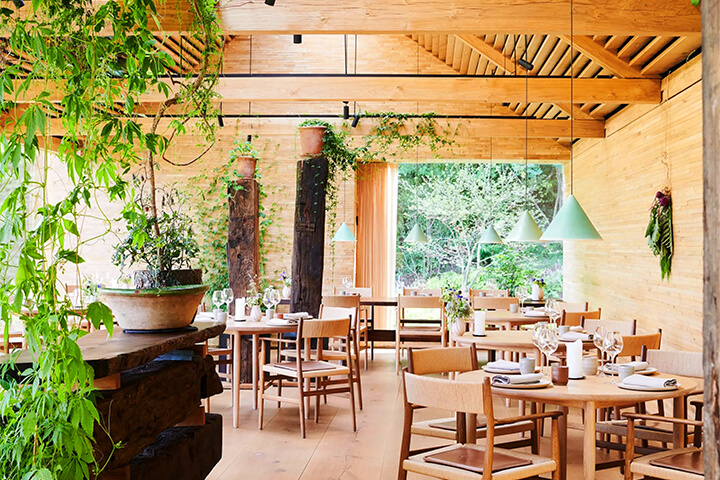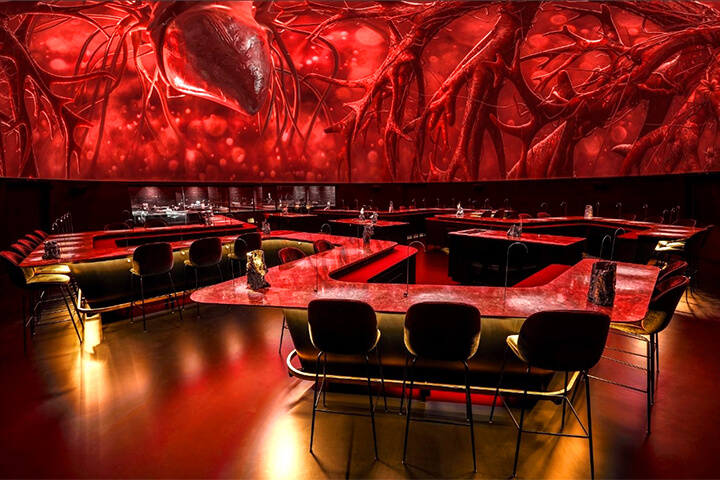Experiential dining is a rapidly growing trend in the restaurant industry. If you are interested in opening an experiential dining concept or incorporating one into your existing establishment, this article provides valuable insights, advice, and inspiration.
What is Experiential Dining?
Experiential dining goes beyond traditional food and service. As a restaurant category, it offers guests immersive and interactive experiences that engage all or most of their senses. This includes concepts from dining in a pitch-black room to tableside cooking demonstrations.
The Rise of Experiential Dining

Now is a great time to invest in an experiential dining concept. The demand for these experiences is growing, as Gen Z redefines consumer values and the technological revolution provides new ways to entertain and engage diners. People want to be immersed in a unique and memorable experience. Experiential dining concepts offer all of that and more.
The audience most primed for experiential dining are Millennials, Gen Z, and people with disposable incomes who are craving something new. Other factors that draw the experiential dining crowd include:
- An escape from the everyday. A unique dining experience can provide a sense of novelty and excitement and can help people to forget about their troubles for a while.
- A way to connect with others. Experiential dining provides a shared experience that can help to strengthen relationships.
- The desire to learn something new. Many restaurants are now offering unique dining experiences that allow guests to learn about new cultures, cuisines, or cooking techniques. This can be a great way to expand one’s horizons and to gain a deeper appreciation for food.
- The wow factor. A surprising and memorable dining experience can provide a sense of wonder and amazement and can leave guests feeling inspired and entertained.
Current Trends in Experiential Dining: Sustainability & Technology
Two trends that continue to move full steam ahead are sustainability and incorporating modern technology into the dining experience.
Sustainability

Sustainability is becoming increasingly important to consumers. More and more people are concerned about the impact of their food choices on the environment. They are looking for ways to eat more sustainably, and they are willing to pay more for sustainable food.
Actively promoting your sustainable values allows your customers to feel good about their choices, how they are spending their money, and who they are supporting. It also makes them feel like part of a movement that is bigger than themselves.

The key to incorporating sustainability is to be creative and think outside the box. Some restaurants educate their diners about sustainability by highlighting the restaurant’s sustainable practices on their menus, website, and social media. Others connect diners with the natural world by serving dishes made with ingredients that are grown or foraged locally, use sustainable farming practices, or incorporating elements of nature into the dining space.
Many restaurants also opt for using sustainable materials in the dining space. This could include using reclaimed wood, recycled furniture, or sustainable fabrics.
Technology

Technology is another trend playing an increasingly important role in experiential dining. Rather than replacing the human element of dining, technology serves us best when it creates a sense of wonder and excitement. Technologically savvy restaurants have also used it to connect dinners with each other and the world around them. Next, we’ll show you several specific examples of technology restaurants are employing to enhance the experience.
Augmented Reality and Virtual Reality
Augmented reality (AR) and virtual reality (VR) can be used to create immersive dining experiences. For example, Le Petit Chef uses augmented reality to create a unique dining experience that takes guests on a journey through the world of food. The restaurant uses 3D projection mapping to create a life-size animated chef who appears at the table and cooks a meal in front of the guests’ eyes.
Tree by Naked in Tokyo offers a VR dining experience that takes guests on a journey through the four elements: earth, fire, water, and wind. Each course of the meal is paired with a VR experience that allows guests to see, smell, and taste the elements in a new way.
Projection Mapping

Projection mapping can be used to create a variety of immersive dining experiences. For instance, Alchemist in Copenhagen uses projection mapping to create a multi-sensory dining experience. The restaurant’s interior is designed to look like a laboratory, and the projection mapping is used to create interactive displays that respond to the guests’ movements.
Haptic Technology

Haptic technology can be used to create tactile dining experiences. For instance, Sublimotion in Ibiza uses haptic technology to create a “culinary journey”. Guests wear a glove that delivers vibrations to their hands, which simulates the feeling of touching different textures.
Biometric Technology
Biometric technology can be used to personalize and entertaining dining experiences. For example, a restaurant could use facial recognition to track a customer’s facial expressions and adjust the lighting, music, or even the menu to match their mood. A restaurant could also use fingerprint scanning to allow customers to unlock secret menus or games.
What Are the Challenges of Operating an Experiential Dining Concept?

Of course, there are challenges when developing and maintaining an experiential dining concept. For instance, the cost of creating an experiential dining experience can be high. Extra expenses may range from technology and other equipment, staff training, and other elements your special concept needs to perform its best.
Because you have to differentiate your restaurant from the competition, alongside attracting and retaining customers, having a solid marketing team on your side is another essential expense towards protecting your brand investment.
Another challenge is creating an experience that appeals to a wide range of guests. However, by thoroughly researching your market, approaching the project in full creative mode, and asking important questions, success is just around the corner. Some guidelines through this process include:
- Building a strong concept. What is the overall theme or experience that you want to create for your guests?
- Making use of all five senses. How will the food look, taste, smell, sound, and feel?
- Be creative with your presentation. How will you present the food to your guests?
- Create a sense of mystery or surprise. For example, will you use unexpected ingredients or serve the food in an unusual way?
And of course, once you are up and running, it’s important to get feedback from your guests. What did they like or dislike about their experience? What would they change? By following these techniques, you can create a unique and appealing experiential dining experience that will keep guests coming back for more.
It’s About More Than the Food

Experiential dining has evolved into an immersive and interactive experience that engages all the senses, offering guests entertainment, engagement, and surprise. With the growing demand for dining experiences that go beyond food, now is the perfect time to invest in an experiential dining concept.




Exploring Nashville’s Diverse Food Scene in Wedgewood | FriendsEAT